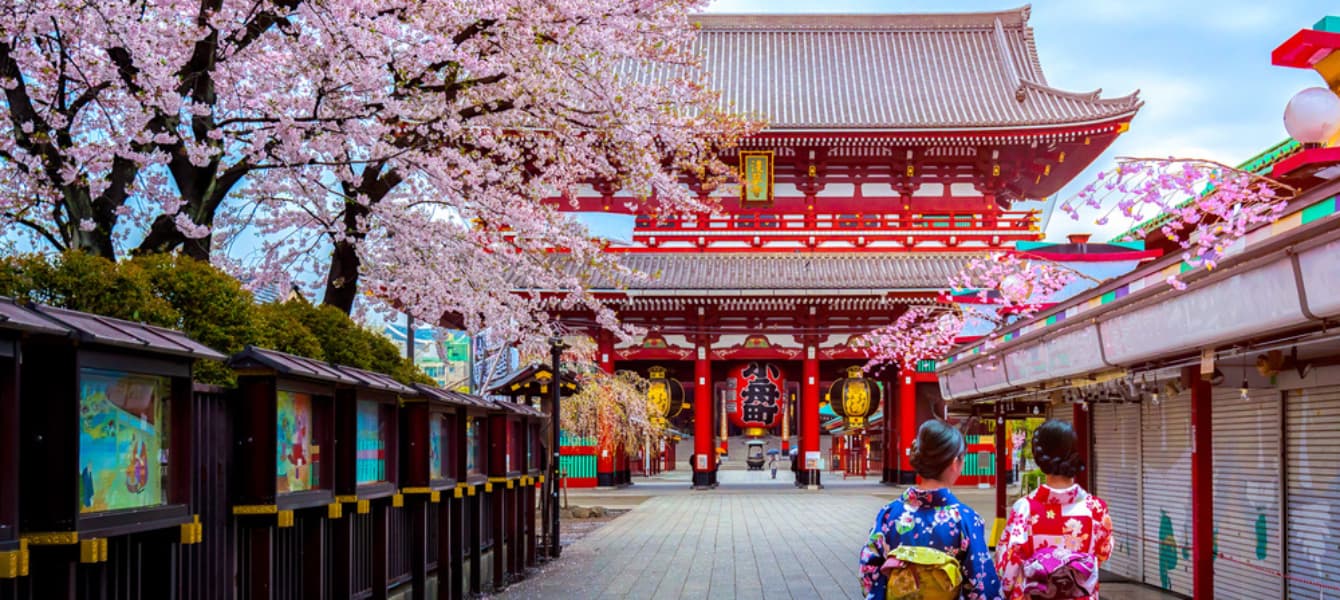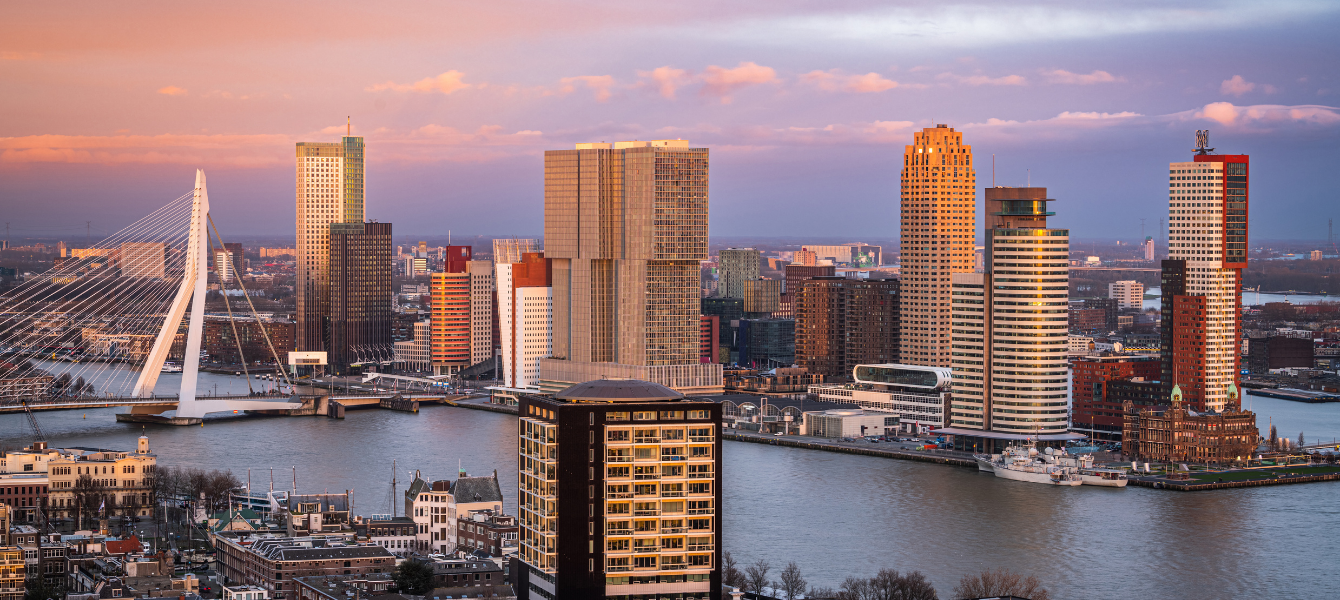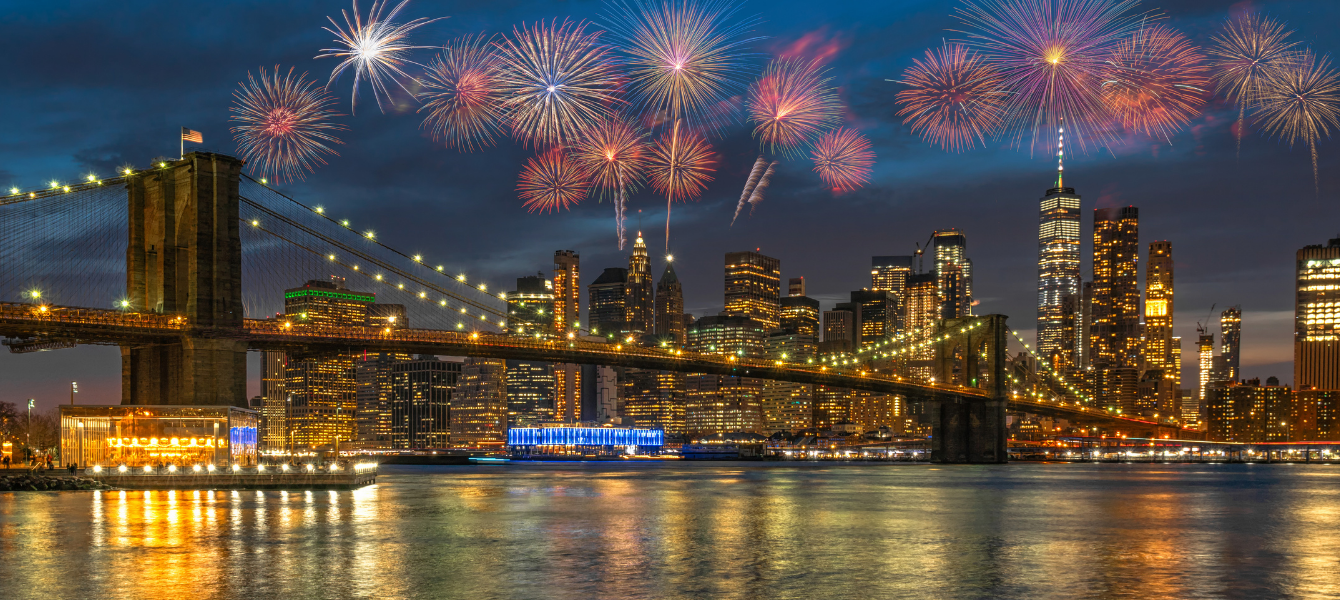Calling all history buffs and culture vultures! Dive into the heart of Tokyo’s spirituality as you explore the captivating Senso-ji Temple. As the oldest temple in Tokyo, it’s a legendary landmark brimming with ancient charm and local energy. Let’s unravel the legends of compassionate deities and discover the beauty of Sensoji together!
Quick Jumplinks
- Legend & Lore of Sensoji Temple
- Architectural Highlights of Sensoji Temple
- Festivals and Events at Senso-ji Temple
- Plan Your Visit to Sensoji Temple
- Frequently Asked Questions
Legend & Lore of Senso-ji Temple
Legend of the Miraculous Statue
The founding story of Senso-ji is steeped in legend. It all goes back to 628 AD when two fishermen brothers were out and about on the Sumida River. Their day wasn’t going well in terms of catching fish but they did find something unusual in their net – a mysterious statue made of gold.
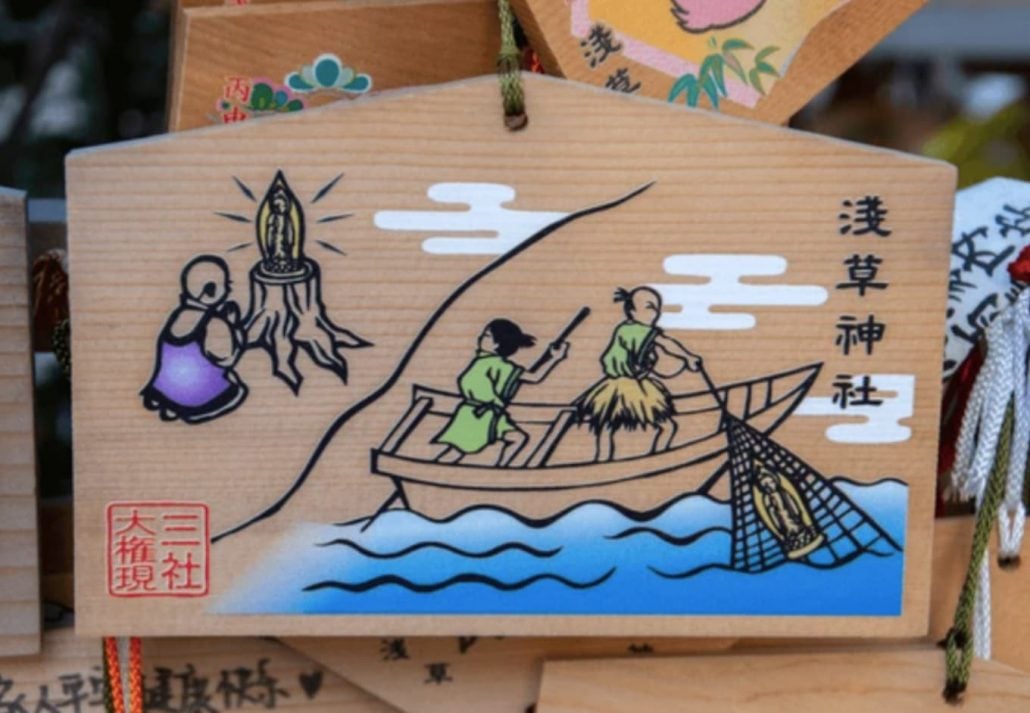
Not recognizing the significance of the statue, they threw it back into the river. However, the statue mysteriously reappeared in their net multiple times. This convinced the local chief that the statue was divine and meant to be enshrined. He transformed his house into a small temple to house the Kannon statue for villagers to worship.
Historical Beginnings and Growth
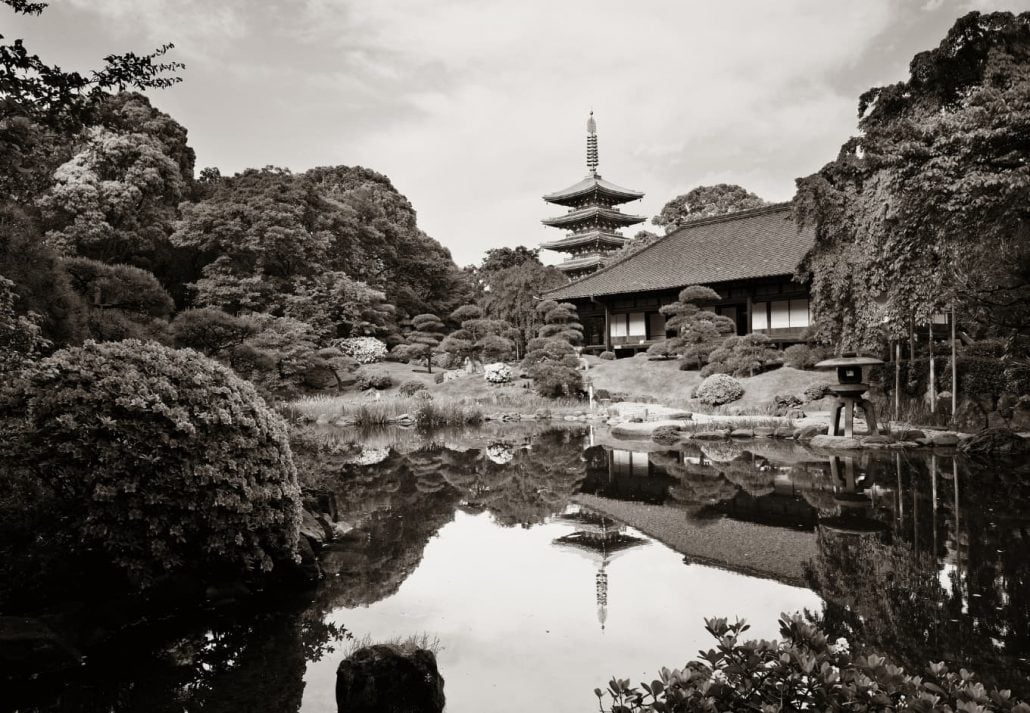
This legendary event is said to have laid the groundwork for Senso-ji Temple’s founding in 645 AD. The temple grew in significance over the centuries, especially during the Edo period (1603-1868). Tokugawa Ieyasu, the first Tokugawa shogun, designated Senso-ji as the tutelary temple of the Tokugawa clan. Other prominent figures followed their lead, further solidifying the temple’s importance.
Through the Ages
Senso-ji Temple has faced its share of challenges throughout history. Fires, air raids, and earthquakes have caused damage on multiple occasions. However, the temple has always been rebuilt, showcasing the enduring spirit behind this significant landmark.
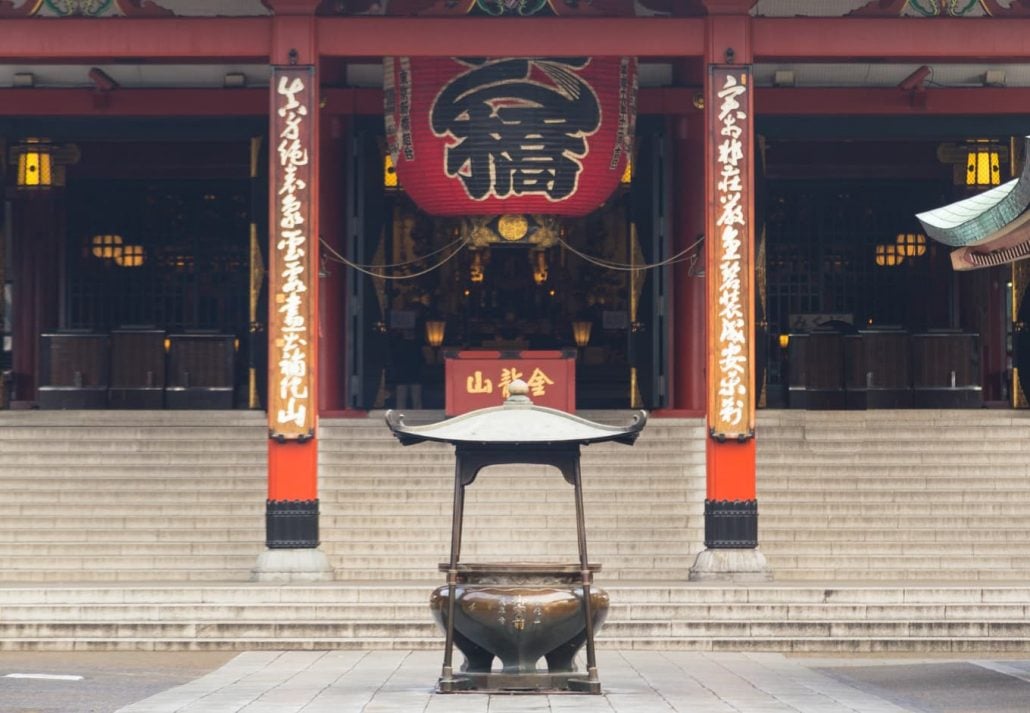
The original statue of Kannon, the goddess of mercy enshrined in the temple, has never been on display for public veneration. It’s believed to be kept safe within the temple. Today, Senso-ji Temple remains a vibrant center of worship and spiritual significance in Tokyo, attracting millions of visitors every year.
Also Read: Best Temples In Japan
Architectural Highlights of Senso-ji Temple: What to See
Senso-ji Temple is a stunning example of Japanese Buddhist architecture. While some of the original structures were destroyed during World War II, meticulous restorations have preserved the temple’s architectural essence.
The buildings are constructed using traditional Japanese techniques, with wood as the primary material. The roofs are adorned with intricate tile work and copper decorations. The vibrant colors used throughout the temple complex, particularly red and gold, add to its visual impact.
Sensō-ji Temple’s architecture offers a glimpse into Japanese history, culture, and religious beliefs. It’s a place where tradition and beauty intertwine to create a truly awe-inspiring experience. Here are its key highlights:
Kaminarimon Gate (Thunder Gate)
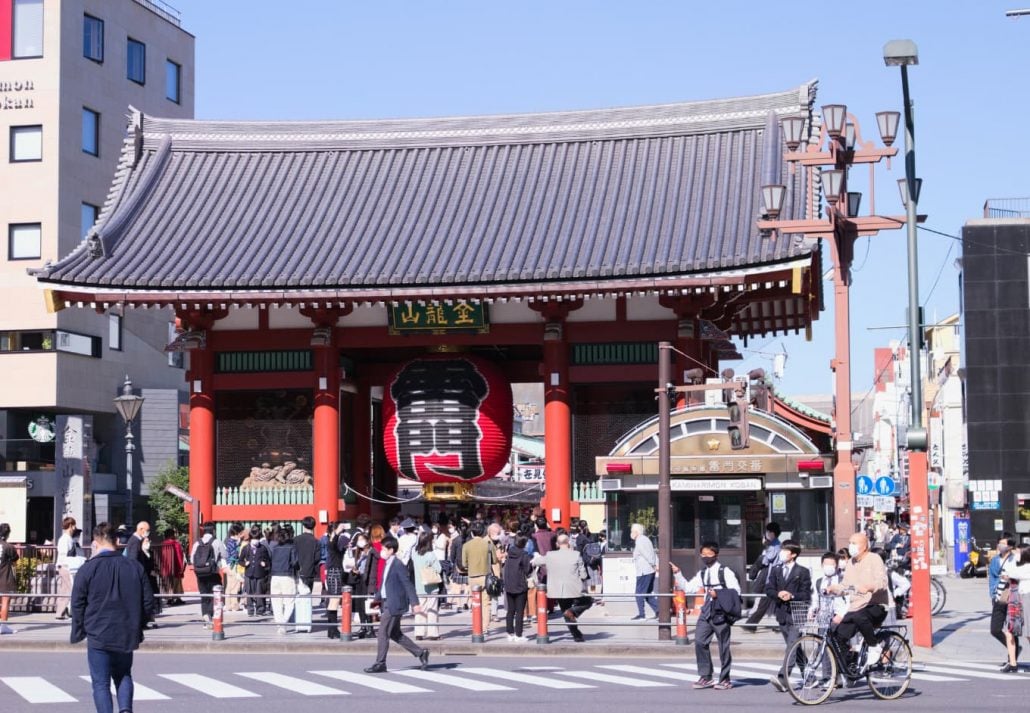
This iconic red entrance gate with a large red lantern is the most recognizable symbol of Senso-ji. The main entrance to the temple complex is usually accessed from here. Under the giant red lantern, you’ll find a dragon carved in fascinating detail. The two statues enshrined in alcoves on either side depict the gods of wind and thunder. Two additional statues stand on the reverse of the gate: Buddhist god Tenryū to the east, and goddess Kinryū to the west.
Nakamise Dōri (Nakamise Shopping Street)
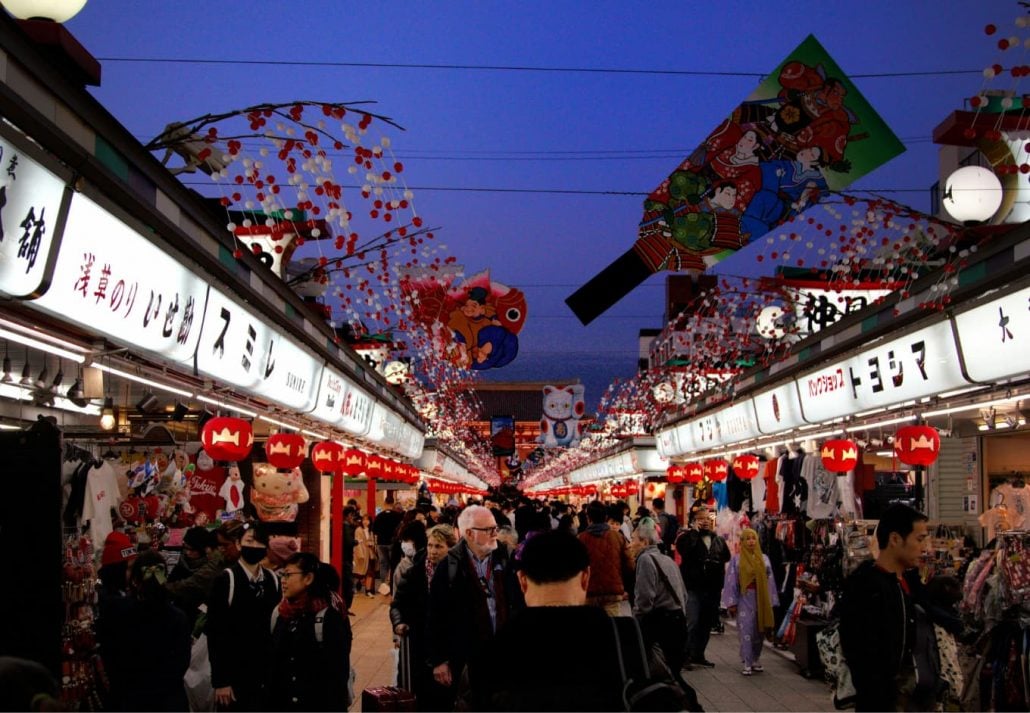
This vibrant street is lined with shops and stretches from Kaminarimon Gate to Hozomon Gate, the temple’s second entrance. You can find everything here from trinkets to genuine Edo-style crafts. While not part of the temple structure itself, it offers a delightful cultural experience with traditional Japanese crafts and souvenirs.
Also Read: Best Shopping Spots In Japan
Hozomon Gate (Treasure House Gate)
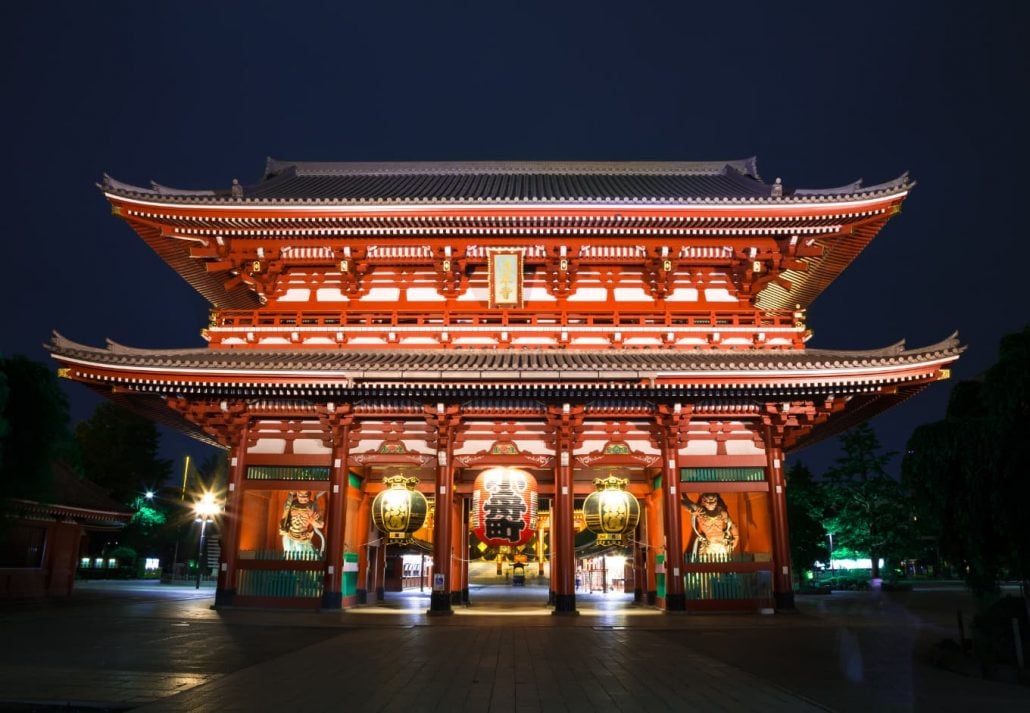
This impressive two-story structure isn’t just an entrance, it’s also a treasure trove (hence the name). The upper floor stores some of Sensoji’s most valuable items. Guarding the entrance are two fierce-looking guardian statues called Nio. These statues are a common feature in Japanese temple architecture and are believed to ward off evil spirits. Hanging above the gate on the other side are massive straw sandals, each weighing over 1,100 pounds! They’re a symbol of good luck and keep the evil away.
Five-Storied Pagoda (Gojūno-tō)
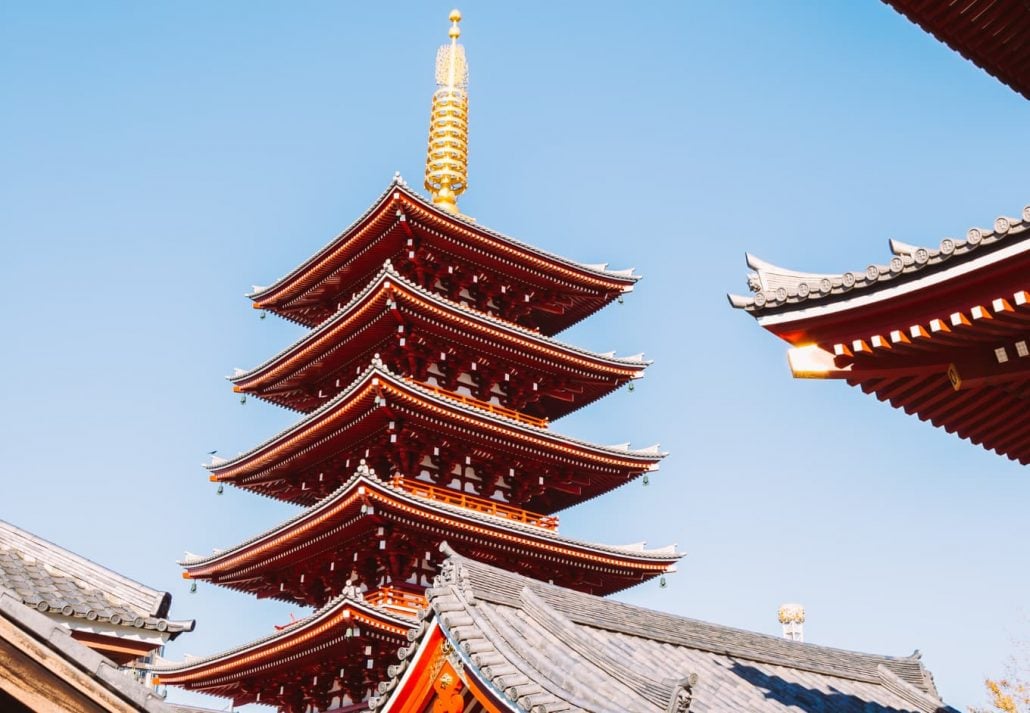
This towering five-story pagoda is one of the few remaining structures in Tokyo built in the 10th century. Each of its five stories symbolizes elements of Buddhist cosmology – sky, wind, fire, water, and earth. While not open to visitors, it’s a beautiful example of traditional pagoda architecture.
Kannon-do Hall (Main Hall)
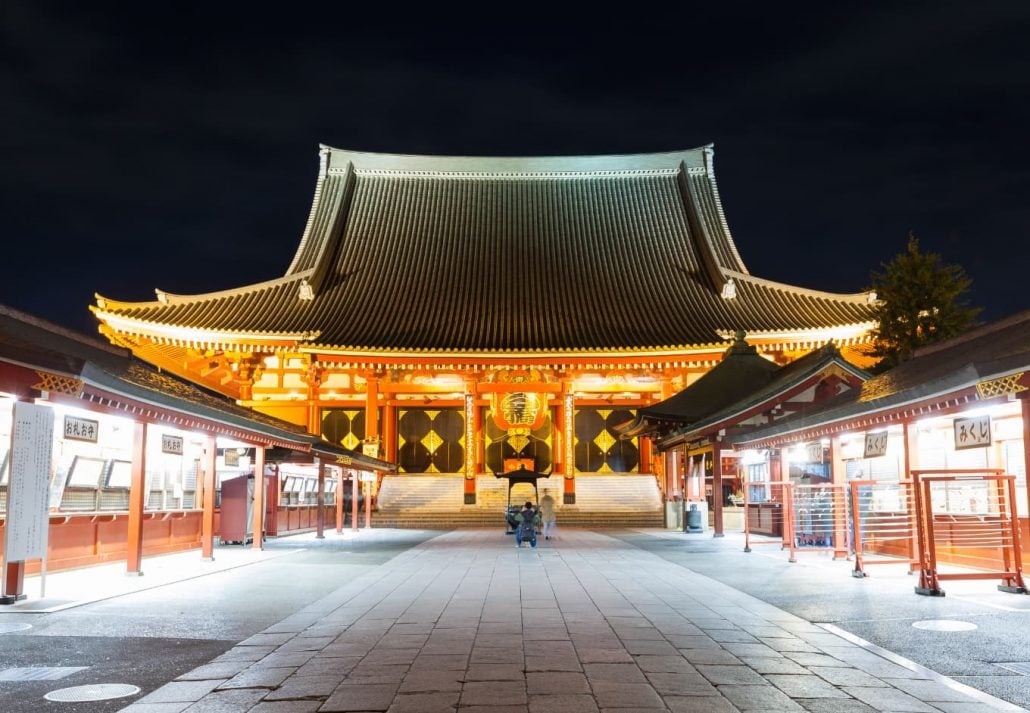
This is the heart of the temple complex. Here, the enshrined statue of Kannon, the Buddhist goddess of mercy, is the main object of worship. Though visitors cannot enter the inner sanctum, the intricate details and ornamentation of the hall’s exterior are a sight to behold.
Festivals and Events at Senso-ji Temple
Sanja Matsuri (Sanja Festival): This is the biggest and most famous festival held at Sensō-ji Temple. It celebrates the Asakusa Shrine and takes place over three days on the third weekend of May. The festival features a parade of ornately decorated portable shrines (mikoshi), traditional dances, and food stalls.
Shirasagi-no Mai (Dance of the White Heron): This beautiful dance ceremony is performed at Senso-ji Temple twice a year. The dance is said to bring good luck and prosperity.
Setsubun (Bean-Throwing Festival): This festival takes place on February 3rd each year. At Senso-ji Temple, there is a ceremony where people eat and throw beans to ward off evil spirits.
Shiman-Rokusen-Nichi (Day Worth 46,000 Visits): During this time, prayers offered at Sensoji are 46,000 times more powerful than prayers offered on other days. This is also the time when the traditional Hozuki Market is held. The market sells hozuki, a type of lantern made from a translucent gourd, as well as other summer goods.
New Year’s Eve: Sensoji Temple is a popular spot to celebrate New Year’s Eve. There is a ceremony where the temple bell is rung 108 times to ward off evil spirits. During this time, purchasing Omamori (lucky charms) is a customary practice believed to bring good fortune.
These are just a few of the many events held at Senso-ji throughout the year. If you are planning a trip to Tokyo, be sure to check the calendar to see what festivals will be happening during your visit.
Plan Your Visit to Senso-ji Temple
Timings
While the Kaminarimon Gate and Asakusa Shrine are open throughout, daily, timings for Sensoji vary upon the season: 6 AM – 5 PM from April to September and 6:30 AM – 5 PM from October to March.
Getting There
By Train: Sensoji Temple is a short walk, about 5 minutes from Asakusa Station on the Tokyo Metro Ginza Line/Toei Asakusa Line/Tobu Skytree Line/Tsukuba Express
Frequently Asked Questions
What are the opening hours of Senso-ji Temple?
Sensoji Temple is open every day from dawn to dusk. The exact times vary depending on the season, but it’s generally open between 6 AM and 5 PM.
Is there an entrance fee to visit Senso-ji Temple?
No, entrance to the Sensoji Temple grounds and main hall is free. However, you can make a donation to the temple if you wish.
What is the dress code for Senso-ji Temple?
Sensoji Temple is a place of worship, so respectful attire is recommended. Revealing clothing or swimwear is not appropriate.
Can I take photos inside Sensoji Temple?
Photography is generally permitted in the main hall and on the temple grounds. However, flash photography is not allowed inside the main hall.
What are some things to see and do around Sensoji Temple?
- Nakamise-dori Shopping Street: This street leads up to the temple and is lined with shops selling traditional Japanese souvenirs, food, and crafts.
- Asakusa Culture Center: This center offers exhibits on the history and culture of Asakusa.
- Sumida River: Take a boat ride on the Sumida River for scenic views of Tokyo.
How do I get to Senso-ji Temple?
Sensoji Temple is easily accessible by public transportation. The closest station is Asakusa Station on the Tokyo Metro Ginza Line and Toei Asakusa Line.
CuddlyNest provides all accommodations to all travelers at the best price. Find unlimited travel inspiration on our blogs and social media channels Facebook, Instagram, and Pinterest.
Recommended Reads:
Best Places To Visit In Tokyo
Cherry Blossom Viewing Spots In Tokyo
The Best Hotels In Tokyo
Millions of places to stay, one app.
Don’t miss out on mobile-only deals and one-of-a-kind offers.

